Readmission rates and outcomes in adults with and without COVID-19 following inpatient chemotherapy admission: A nationwideanalysis
Philip Kanemo,Keffi Mubarak Musa,Vaishali Deenadayalan,Rafaella Litvin,Olubunmi Emmanuel Odeyemi,Abdultawab Shaka,Naveen Baskaran,Hafeez Shaka
Abstract BACKGROUND The coronavirus disease 2019 (COVID-19) pandemic has received considerable attention in the scientific community due to its impact on healthcare systems and various diseases.However,little focus has been given to its effect on cancer treatment.AIM To determine the effect of COVID-19 pandemic on cancer patients’ care.METHODS A retrospective review of a Nationwide Readmission Database (NRD) was conducted to analyze hospitalization patterns of patients receiving inpatient chemotherapy (IPCT) during the COVID-19 pandemic in 2020.Two cohorts were defined based on readmission within 30 d and 90 d.Demographic information,readmission rates,hospital-specific variables,length of hospital stay (LOS),and treatment costs were analyzed.Comorbidities were assessed using the Elixhauser comorbidity index.Multivariate Cox regression analysis was performed to identify independent predictors of readmission.Statistical analysis was conducted using Stata® Version 16 software.As the NRD data is anonymous and cannot be used to identify patients,institutional review board approval was not required for this study.RESULTS A total of 87755 hospitalizations for IPCT were identified during the pandemic.Among the 30-day index admission cohort,55005 patients were included,with 32903 readmissions observed,resulting in a readmission rate of 59.8%.For the 90-day index admission cohort,33142 patients were included,with 24503 readmissions observed,leading to a readmission rate of 73.93%.The most common causes of readmission included encounters with chemotherapy(66.7%),neutropenia (4.36%),and sepsis (3.3%).Comorbidities were significantly higher among readmitted hospitalizations compared to index hospitalizations in both readmission cohorts.The total cost of readmission for both cohorts amounted to 1193000000.00 dollars.Major predictors of 30-day readmission included peripheral vascular disorders [Hazard ratio (HR)=1.09,P < 0.05],paralysis (HR=1.26,P < 0.001),and human immunodeficiency virus/acquired immuno-deficiency syndrome (HR=1.14,P=0.03).Predictors of 90-day readmission included lymphoma (HR=1.14,P < 0.01),paralysis (HR=1.21,P=0.02),and peripheral vascular disorders (HR=1.15,P <0.01).CONCLUSION The COVID-19 pandemic has significantly impacted the management of patients undergoing IPCT.These findings highlight the urgent need for a more strategic approach to the care of patients receiving IPCT during pandemics.
Key Words: Chemotherapy;Coronavirus disease 2019 pandemic;Nationwide readmission database;Readmission rates;Cancer;Healthcare cost
INTRODUCTION
On the 11thof March 2020,the World Health Organization (WHO) declared coronavirus disease 2019 (COVID-19) a global pandemic following its discovery in December 2019 in Wuhan,China[1,2].Since then,WHO has reported over 756 million cases and 6.8 million deaths worldwide[3],with the United States alone accounting for over 100 million cases and 1 million deaths[3].COVID-19 is caused by a virus known as severe acute respiratory syndrome coronavirus 2[4],which results in a range of respiratory symptoms from mild to severe[4].However,the introduction and widespread administration of COVID-19 vaccines have contributed to a decline in infection rates[5].
The COVID-19 pandemic has had a profound impact on various aspects of human life[6],with healthcare services and delivery being particularly affected[7,8].The 30-day readmission rate serves as a crucial metric used by the Center for Medicare and Medicaid Services to evaluate hospitals and assess the quality of healthcare services[9,10].In 2012,the Center for Medicare and Medicaid Services introduced the Hospital Readmission Reduction Program to enhance healthcare quality and reduce costs[11].The annual cost associated with readmissions averages between 15 and 20 billion dollars[12].Reducing the 30-day readmission rates can significantly decrease healthcare costs and alleviate the strain on healthcare facilities[13].Assessing readmission rates becomes even more important for patients undergoing chemotherapy,as chemotherapy often entails extended periods of treatment and substantial healthcare expenses[13].A systematic review conducted prior to the COVID-19 pandemic revealed readmission rates ranging from 3% to 34% for patients undergoing chemotherapy[14].Another study by Tennisonetal[14] reported a 55% readmission rate for patients undergoing chemotherapy in United States hospitals.However,since the onset of the COVID-19 pandemic,there has been a scarcity of data regarding the hospitalization and care of patients receiving chemotherapy during this period.
This study aims to investigate the impact of the COVID-19 pandemic on 30-day and 90-day readmission rates among patients hospitalized for inpatient chemotherapy (IPCT).We also aim to identify common causes and independent predictors of readmission in this patient population.By conducting this study,we aim to gain a deeper understanding of the effects of COVID-19 on the management of cancer patients.Furthermore,the findings of this study can contribute to the development of strategies that improve the care of cancer patients.Finally,we believe that this study will pave the way for further research on the effects of pandemics on healthcare infrastructure and services.
MATERIALS AND METHODS
Study design and data source
We conducted a retrospective cross-sectional review of hospitalizations for IPCT across the United States during a oneyear period in 2020.Hospitalization data for 2020 was retrieved from the Nationwide Readmission Database (NRD).The NRD is a national database that captures patients' hospitalization,readmissions,and other relevant discharge histories from over 31 different states in the United States.The NRD is a product of the Healthcare Cost and Utilization Project(HCUP),State Inpatient Databases,and the Agency for Healthcare Research and Quality[9].The database records over 40 International Classification of Diseases-10 (ICD-10) recognized diagnoses and 25 procedures[9].It covers approximately 62.2% of the United States population and 60.8% of total hospitalizations in the country[15].It contains unique,verified de-identified patient linkage that enables tracking of individual hospitalizations and readmissions.Data within the NRD is available from January 1 to December 31 each year,and information outside of these dates cannot be accessed[16].With over 18 million hospital stays recorded,the NRD provides ample and suitable data for our study.
Data Collection
We collected data on adult hospitalizations (age >18 years) for IPCT during the COVID-19 pandemic in 2020.Hospitalizations for conditions other than IPCT and those involving patients under 18 years of age were excluded from the study.Additionally,hospitalizations in December were excluded due to the lack of an adjoining 30-day period to determine 30-day readmission.The hospitalizations were divided into two groups: The 30-day readmission cohort (30DRC) and the 90-day readmission cohort (90DRC).Within each cohort,we identified and tagged each case that met our inclusion criteria as an index case on the first admission.Each index case was traced for readmission within 30 d of admission and tagged as a 30-day readmission in the 30DRC.Similarly,each index case was traced for readmission within 90 d of admission and tagged as a 90-day readmission in the 90DRC.Specific patient data,including demographics (age,sex,health insurance type,household income),mortality on readmission,LOS,and cost of admission,were collected.Hospital-specific variables,such as type of hospital,bed size,and hospital location,were also obtained.To account for the effects of comorbid conditions,we utilized the Elixhauser Comorbidity Index (ECI) to assess the level of comorbidities in the hospitalizations.The ECI is a software tool developed as part of HCUP,which identifies 38 different pre-existing comorbidities in hospital administrative data[15].The ECI software has been refined for ICD-10 comorbidities and is available in nationwide HCUP databases for years 2019 onwards[15].The ECI demonstrates a better prognostic value compared to the Charlson comorbidity index[16].
Outcome measures
The primary outcome of our study was the all-cause 30-day and 90-day readmission rates.Secondary outcomes included demographic characteristics,insurance type,mortality rate during readmission,average LOS,average cost of readmission,and independent predictors of readmission.
Analysis method
All analyses were performed using weighted samples for national estimates in accordance with HCUP regulations for using the NRD[17].Data analysis was conducted using Stata®Version 16 software (StataCorp,Texas,United States).We examined demographic characteristics and calculated mean age,sex distribution,and mean household income.Additionally,we analyzed hospital-specific features,including hospital location,teaching status,and bed size.Comorbidities were calculated as proportions in our cohorts using the 31 ECI comorbidities,and the chi-square test was employed to compare characteristics between index hospitalizations and readmissions in 2020.A multivariate Cox regression analysis was performed to identify independent variables associated with readmission.
Ethical Consideration
As with other HCUP databases,the NRD data is anonymous and cannot be used to identify individual patients.Therefore,institutional review board approval was not required for our study.
RESULTS
We identified a total of 87756 hospitalizations for IPCT in the 2020 NRD database.In the 30DRC,we identified 55005 index hospitalizations during the study period.Among these,there were 32904 readmissions within 30 d,resulting in a 30-day readmission rate of 59.8%.Table 1 provides a comparison of the demographics of hospitalized patients between index hospitalizations and readmission cohort.Among the 90DRC,we identified 33636 index hospitalizations,of which 24503 patients were readmitted within 90 d of admission.The 90-day readmission rate was 73.93%.In both readmission cohorts,the proportion of male patients was higher than female patients.The majority of hospitalized patients in both cohorts were in their middle age.Private health insurance was the primary payer for hospital bills in most cases.A significant number of patients in both readmission cohorts belonged to the 26th-50thquantile of the national median household income.The rates of 30-day and 90-day readmission were higher in patients with Medicaid and private insurance,as well as those with a higher comorbidity burden (ECI score ≥ 4).
Comorbidities analyzed were significantly more prevalent in readmissions compared to index hospitalizations in both readmission cohorts.Detailed comparisons of comorbidities between index hospitalizations and readmissions in the 30DRCs and 90DRCs are listed in Tables 2 and 3,respectively.The majority of patients tested negative for COVID-19 in both index hospitalizations and readmissions,as depicted in Figure 1.Metropolitan teaching hospitals had the highest number of admissions in both cohorts.Table 4 summarizes the hospital characteristics among index hospitalizations and readmissions.
Common causes of readmission in both readmission cohorts included admissions for chemotherapy,neutropenia,nonspecified sepsis,antineoplastic-induced pancytopenia,agranulocytosis secondary to chemotherapy,sepsis due toEscherichiacoli,admissions for immunotherapy,acute myeloblastic leukemia,specified sepsis,and acute kidney failure.Figure 2 demonstrates the top causes of 30-day readmission during the COVID-19 pandemic.Mortality was higher among readmitted patients in both readmission cohorts.Figure 3 compares the mortality in index hospitalizations and 30DRCs and 90DRCs,respectively.
In both cohorts,readmissions had a shorter average LOS compared to index hospitalizations.The average LOS for readmitted patients was 5.60 d in the 30DRC,compared to 6.77 d for index cases (P< 0.001).In the 90DRC,the mean LOS for readmitted patients was 6.37 d,while index hospitalizations had a mean LOS of 7.51 d (P< 0.001).The total number of days lost due to hospitalization was higher in the 30DRC,totaling 184277 d compared to 156086 d in the 90-day cohort.The mean adjusted cost of hospitalization was higher in the 90-day cohort,with an average of 25646.4 dollars spent per index admission and 23477.0 dollars spent per readmission.In the 30DRC,the average cost per index admission was 22951.9 dollars,and 19220.8 dollars per readmission.The total cost incurred due to readmission across the country was 625 million dollars for the 30DRC and 568 million dollars for the 90DRC.
The results of the multivariable Cox regression analysis to identify independent predictors of 30-day and 90-day readmission are shown in Tables 5 and 6,respectively.Presence of comorbidities,including peripheral vascular disorder[Hazard ratio (HR)=1.09,P=0.048],paralysis (HR=1.26,P< 0.001),human immunodeficiency virus/acquired immunodeficiency syndrome (HIV/AIDS) (HR=1.14,P=0.03),and lymphoma (HR=1.23,P< 0.001),were associated with an increased risk of readmission for IPCT within 30 d of discharge during the COVID-19 pandemic.Being in the middle age group (HR=0.83,P< 0.001),elderly age groups (HR=0.78,P< 0.001),discharge against medical advice (HR=0.69,P=0.031),renal failure (HR=0.89,P=0.004),liver disease (HR=0.9,P=0.02),and coagulopathy (HR=0.91,P=0.002) were associated with a decreased risk of readmission within 30 d of discharge.Figure 4 shows a Kaplan-Meier readmission curve for 30-day readmissions by COVID-19 status,with aP-value < 0.01.
A similar profile of comorbidities increased the risk of 90-day readmission as observed in the 30DRC,except for HIV/AIDS (HR=1.1,P=0.211).Other variables analyzed for the risk of 90-day readmission followed the same trend as the 30DRC,except for coagulopathy (HR=0.95,P=0.093).
DISCUSSION
Our study provides a comprehensive nationwide view of the care received by patients undergoing IPCT during the COVID-19 pandemic.To the best of our knowledge,this is the first study that specifically focused on and analyzed factors related to hospitalization for patients receiving IPCT during the pandemic.We observed a 30-day readmission rate of 58.9% and a 90-day readmission rate of 73.93%,both of which are significantly higher than rates reported in previous similar studies[18,19].This increase can be attributed to the strain imposed on the healthcare system by the pandemic.Similar findings were reported by Looetal[20] and Matthewsetal[21],who also observed an increase in readmission rates during the COVID-19 pandemic.The demographics of our patients were comparable and consistent with those reported in studies conducted before the pandemic[11,22].
Several studies conducted during the pandemic have reported higher costs of hospitalization,and our study aligns with these findings[23,24].With an average cost of re-hospitalization of 22952.0 dollars observed in our study,the cost was significantly higher than the average cost of 17035 dollars reported in similar hospitalizations before the pandemic[25].However,contrary to the findings of higher readmission costs compared to index admissions reported by Kwei-Nsoroetal[9],our study revealed a higher cost of index admission.
The ECI scores were higher among readmitted hospitalizations compared to index hospitalizations due to the higher comorbidity burden among readmitted patients.Higher ECI scores are associated with higher mortality[26,27],which was also observed in our study,consistent with previous studies[28,29].

Table 1 Comparison of patients’ demographics between inpatient chemotherapy and readmission for inpatient chemotherapy,Nationwide Readmission Database,2020
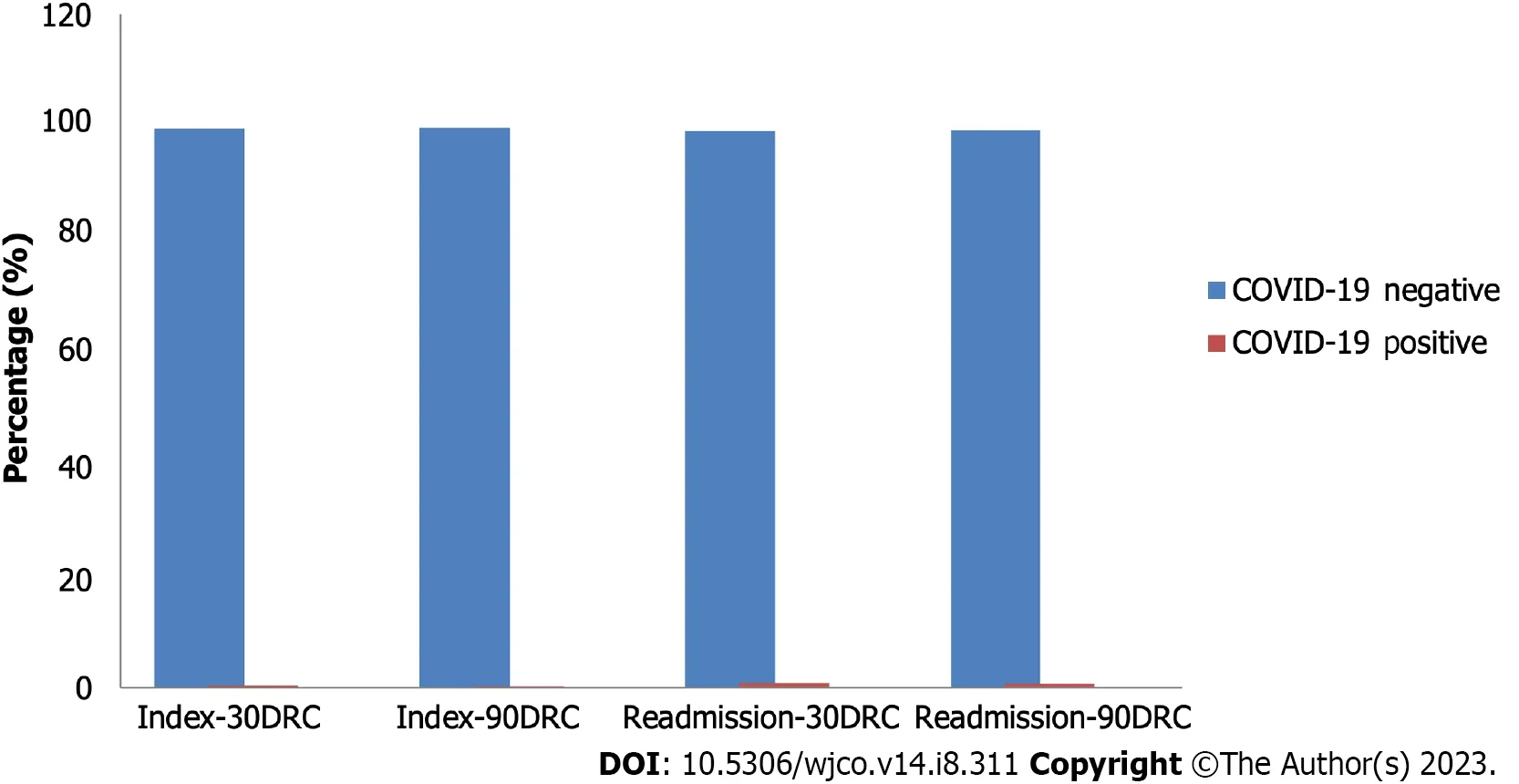
Figure 1 Coronavirus disease 2019 status of index and readmitted case for 30-days and 90-days readmission cohort,2020. COVID-19:Coronavirus disease 2019;DRC: Day readmission cohort.
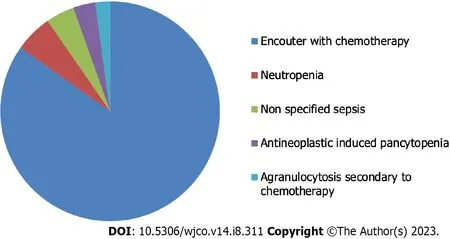
Figure 2 Top five causes of 30-days readmission for inpatient chemotherapy during coronavirus disease 2019 pandemic,Nationwide Readmission Database,2020.
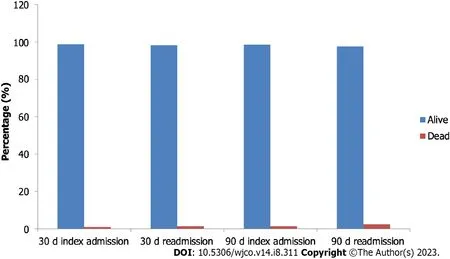
Figure 3 Comparison of Mortality Between Index Admission and Readmission in 30-days and 90-days readmission cohort,Nationwide Readmission Database,2020.
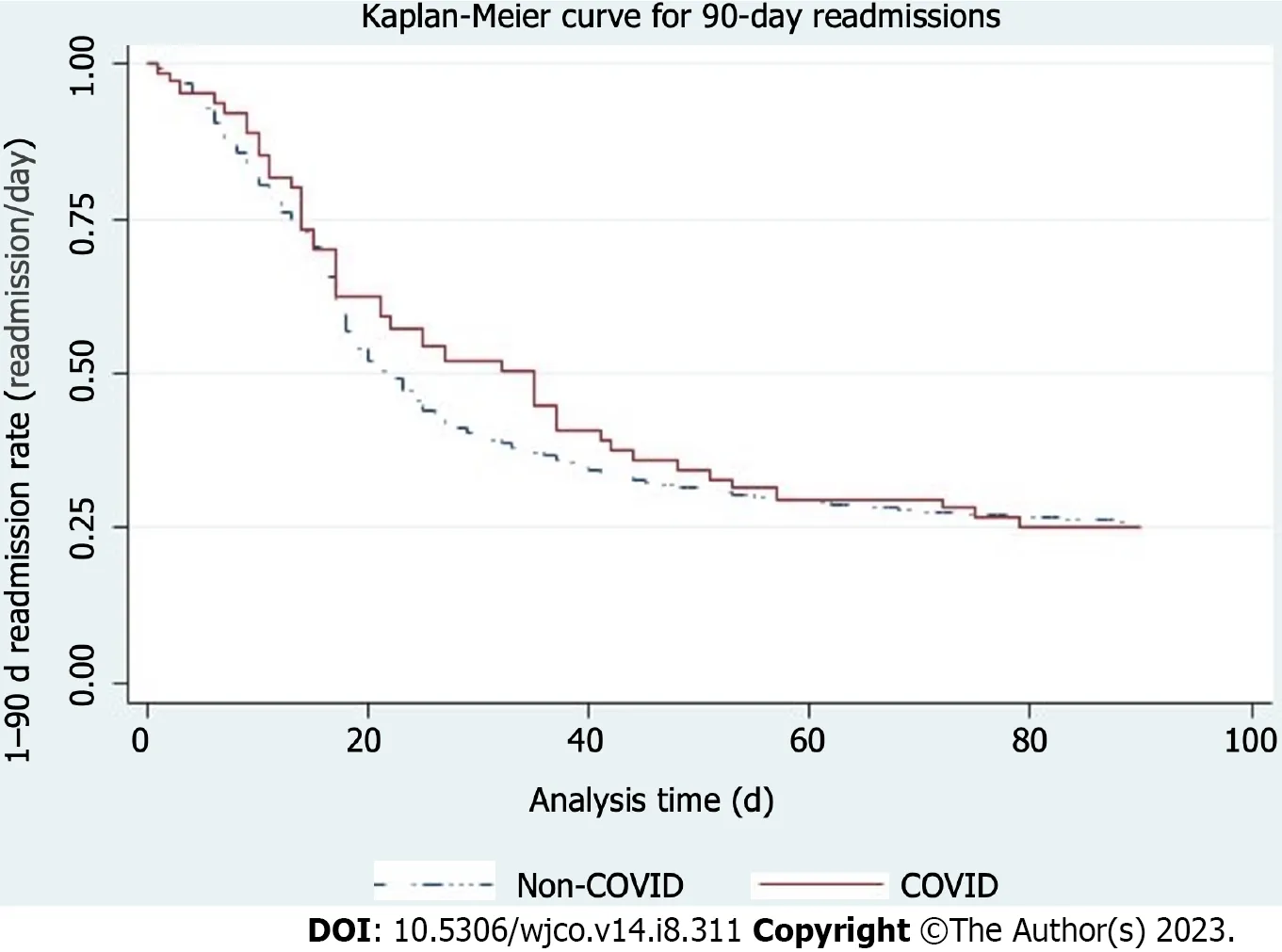
Figure 4 Kaplan-Meier curve for 90-readmision,Nationwide Readmission Database,2023. COVID: Coronavirus disease.
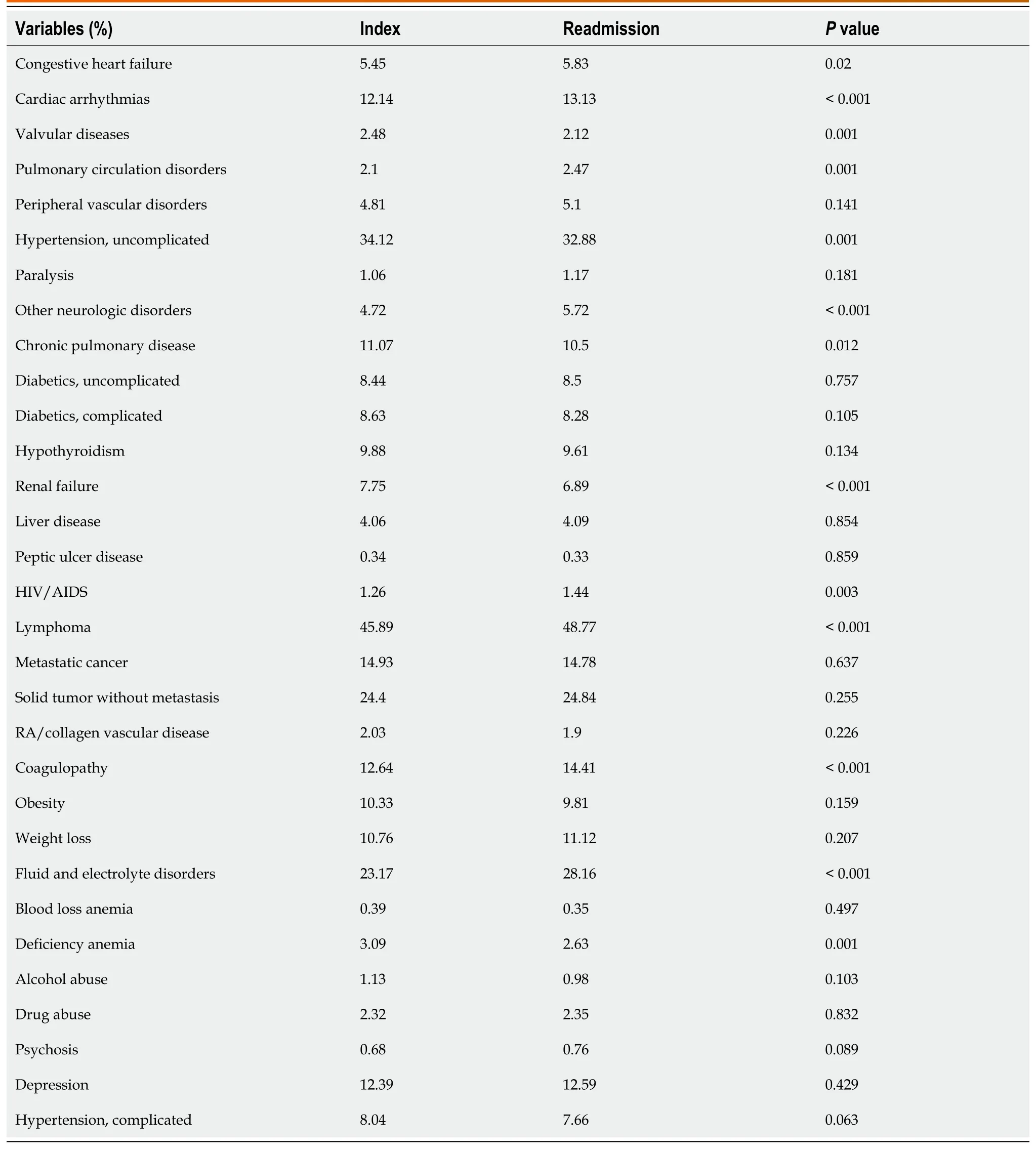
Table 2 Comparing the 31 elixhauser comorbidities between index admission and 30-days readmission for inpatient chemotherapy,Nationwide Readmission Database,2020
The most common cause of readmission was admission for chemotherapy.The Kaplan-Meier curve (Figure 4)demonstrated a shorter time to 50% readmission in the non-COVID-19 group (20 d) compared to the COVID-19 group (36 d).This could be explained by the fact that COVID-19 positivity delayed the admission for chemotherapy,which was the most common cause of readmissions.Other causes of readmissions included neutropenia,sepsis,and acute kidney injury,in line with previous studies[13,30].
We observed a significant number of patients undergoing IPCT being managed in medium-sized metropolitan teaching hospitals.However,we did not observe any significant difference in the type of treatment center between index hospitalizations and readmissions.Middle-aged and elderly patients had a decreased risk of readmission,likely due to the higher prevalence of comorbidities in these age groups.Our results showed that comorbidities were associated with an increased risk of readmission,consistent with findings in other studies[31,32].
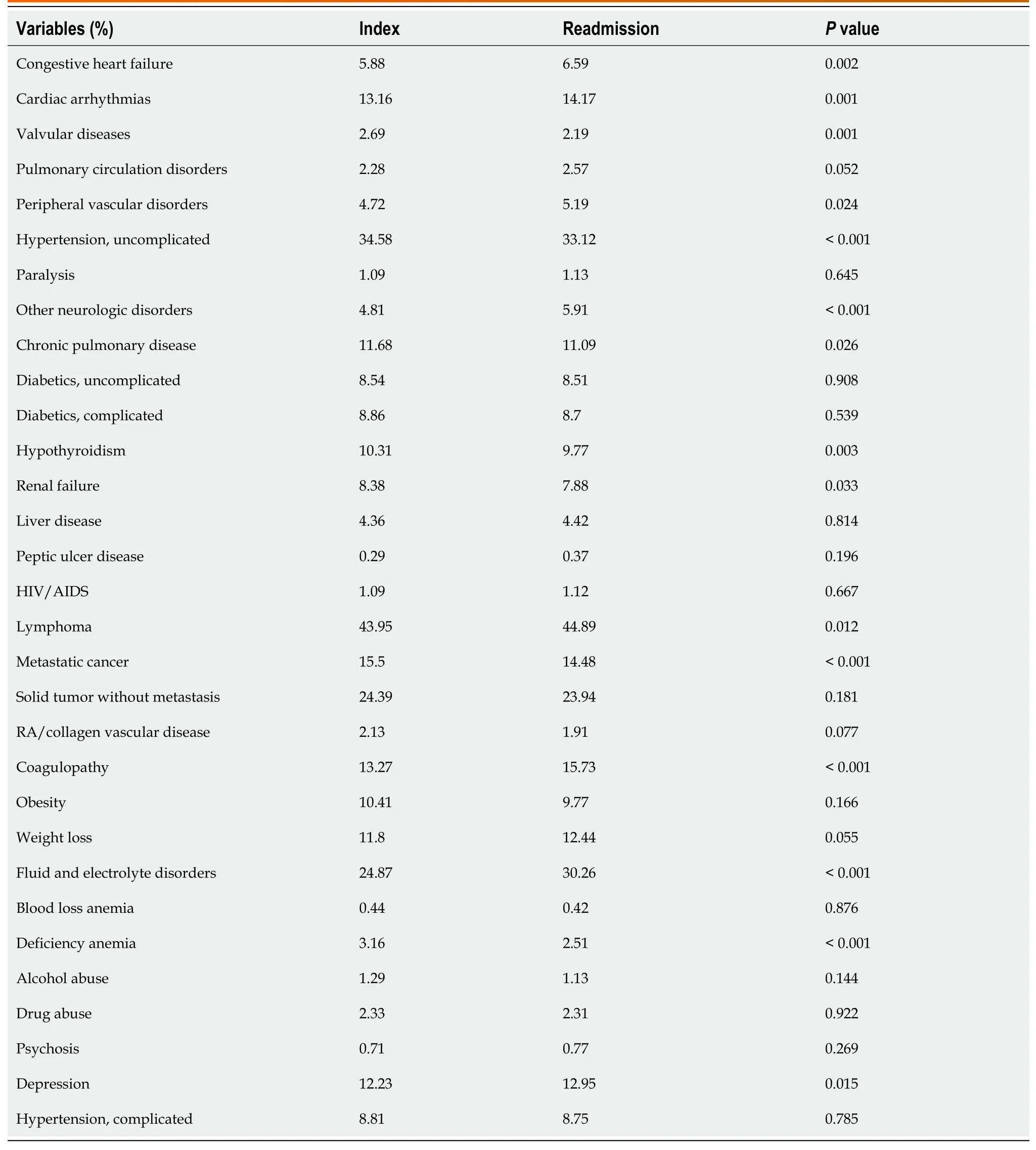
Table 3 Comparison of the 31 elixhauser comorbidities between index admission and 90-days readmission for inpatient chemotherapy,Nationwide Readmission Database,2020
Previous studies have indicated that discharge against medical advice increases the risk of readmission,but our results were contrary to this[16,32].This could be explained by the possibility that patients who left the hospital against medical advice had limited access to the healthcare system,which was heavily impacted by the pandemic[8,33].However,further research is needed to explore this area.We found weight loss to be an independent predictor of 90-day readmission,which is consistent with a survey of approximately 10000 general medicine discharges where weight loss was identified as a significant predictor of 30-day readmissions,aligning with our findings in the 90DRC[33].However,we did not find weight loss to be an independent predictor of 30-day readmission,and the reason for this remains unclear.Additionally,contrary to our expectations and findings in similar studies[21,34],COVID-19 was not identified as an independent predictor of readmission.This could be due to the smaller percentage of COVID-19-infected patients in our study population or could be an area for further investigation.

Table 4 Comparison of hospital specific characteristics of index admissions and readmissions for inpatient chemotherapy,Nationwide Readmission Database,2020
Finally,we acknowledge some limitations in our study.The readmission rates may vary across different states,but the NRD does not provide state-specific data,preventing us from drawing conclusions at the state level.Our study excluded elective hospitalizations in December,potentially leading to a missed number of readmissions during that month.
CONCLUSION
The COVID-19 pandemic has significantly impacted the management of patients receiving IPCT.There is a need for a more strategic approach in the care of patients undergoing IPCT during pandemics.
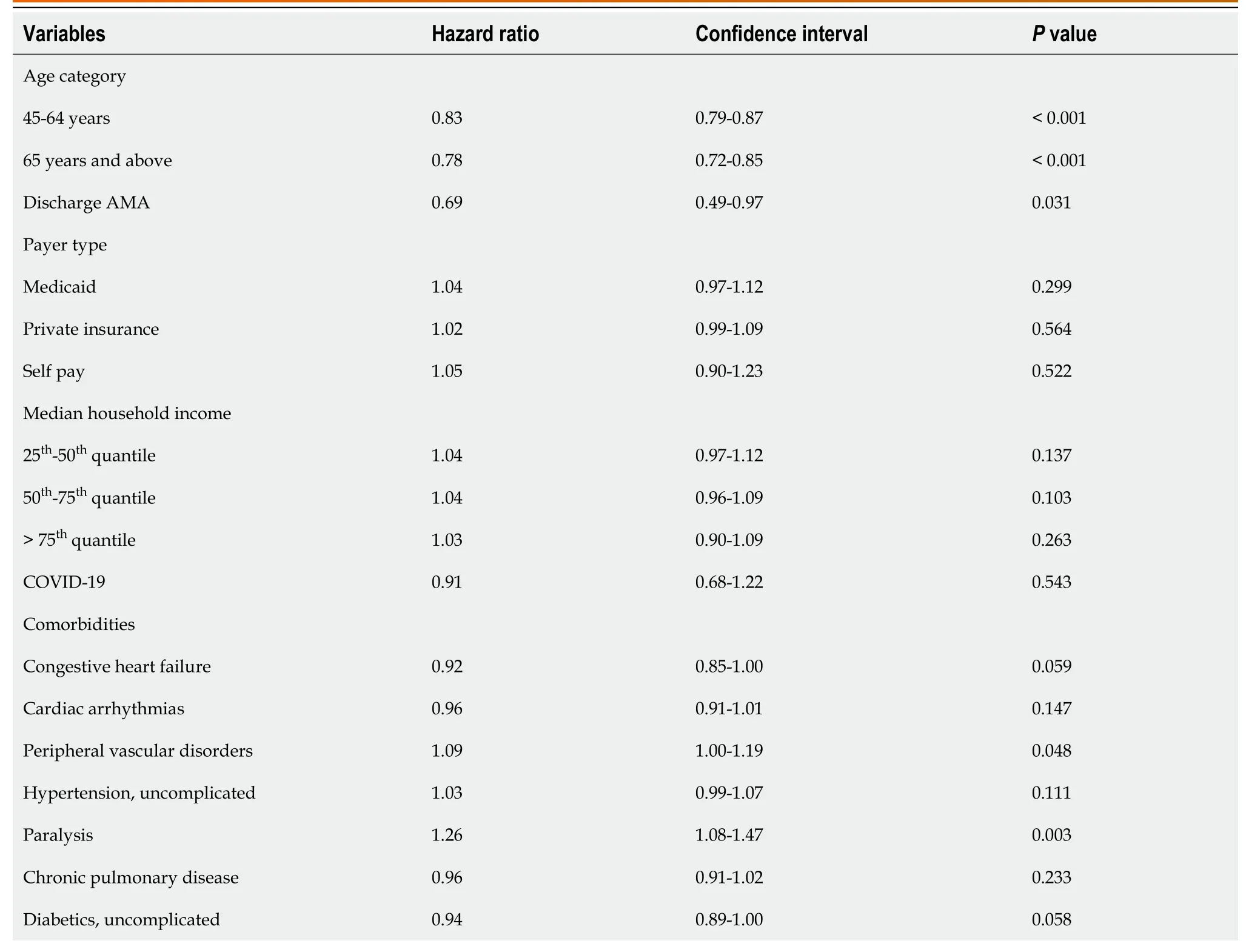
Table 5 Independent predictors of 30 d readmission for inpatient chemotherapy,Nationwide Readmission Database,2020

AMA: Against medical advice;HIV/AIDS: Human immunodeficiency virus/acquired immuno-deficiency syndrome.
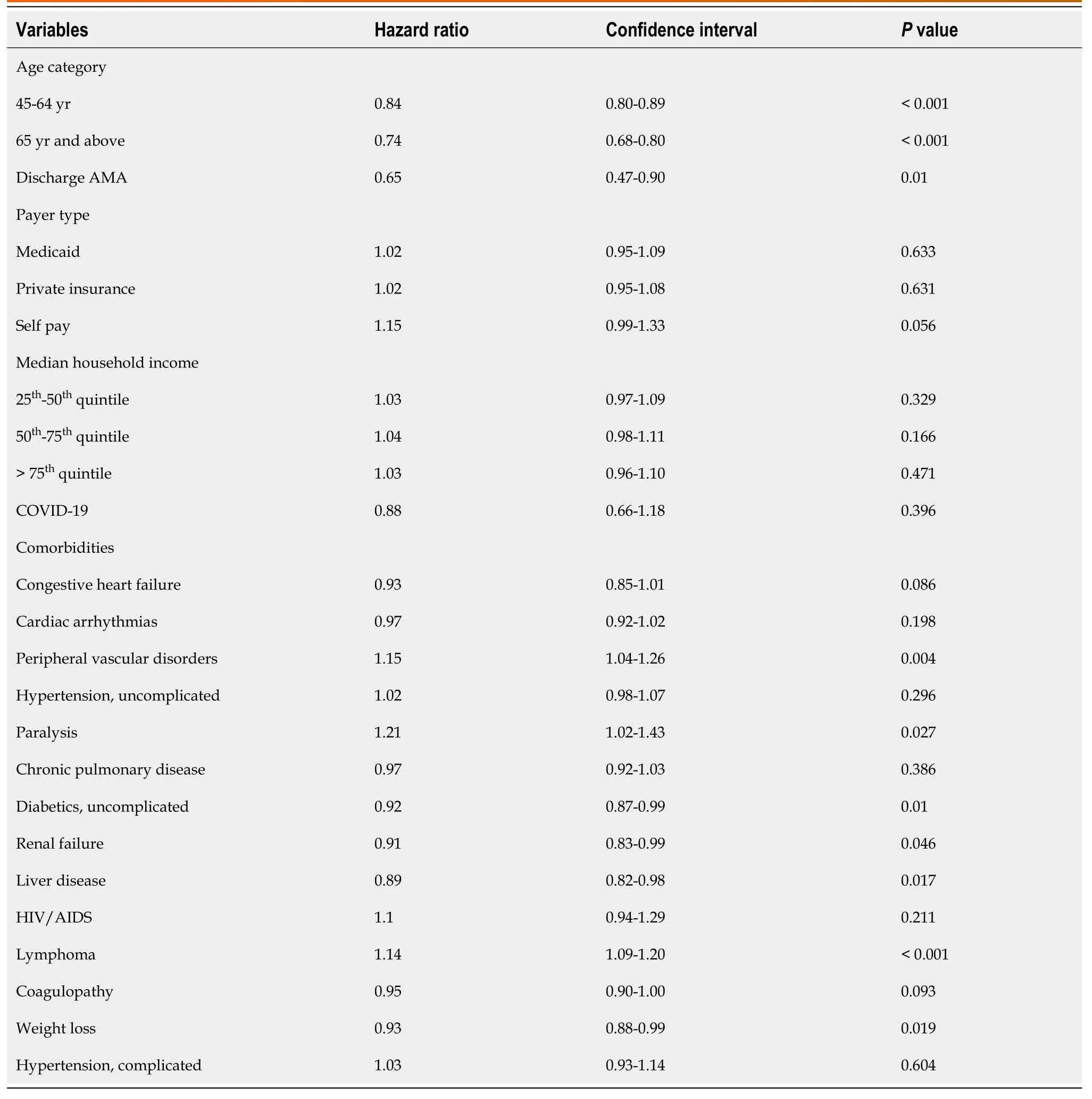
Table 6 Independent predictors of 90 d readmission for inpatient chemotherapy,Nationwide Readmission Database,2020
ARTICLE HIGHLIGHTS
Research background
The coronavirus disease 2019 (COVID-19) pandemic has had a profound impact on healthcare services and has resulted in modifications to the management of various diseases.
Research motivation
The treatment of cancer has undergone significant changes during the COVID-19 pandemic.Understanding the effects of these changes can provide valuable insights to better prepare for future pandemics.
Research objectives
This study aims to provide insights into the outcomes of hospitalization for in hospital chemotherapy during the COVID-19 pandemic.
Research methods
We conducted a retrospective review of a Nationwide Readmission Database for patients undergoing inpatient chemotherapy (IPCT) during the COVID-19 pandemic.We analyzed data on readmission rates,causes of readmission,and predictors of readmission.
Research results
We found a 90-day readmission rate of 59.8% and a 30-day readmission rate of 73.93%.The most common cause of readmission was chemotherapy encounters (66.7%).Predictors of readmission included peripheral vascular disorders[Hazard ratio (HR)=1.09,P=0.04] and paralysis (HR=1.26,P< 0.001).The total cost incurred due to readmission during the pandemic was 1193000000.00 dollars.
Research conclusions
The COVID-19 pandemic has had a significant impact on the management of cancer patients.There is a need for a more strategic approach to the care of patients undergoing IPCT during pandemics.
Research perspectives
This study opens the door for further investigation into the effects of pandemics on disease management.
FOOTNOTES
Author contributions:Kanemo P and Shaka H conceived of the presented idea and designed and proposed the study protocol;Deenadayalan V and Litvin R extracted data from the nationwide readmission database;Shaka A and Baskaran N provided tools for analysis and conducted the analysis;Musa KM,Shaka H and Odeyemi OE interpreted the analysis results and wrote the manuscript;Shaka H and Kanemo P supervised the findings of this work;all authors discussed the results and contributed to the final manuscript.
Institutional review board statement:As the nationwide readmission database data is anonymous and cannot be used to identify patients,institutional review board approval was not required for this study.
Informed consent statement:As the nationwide readmission database data is anonymous and cannot be used to identify patients,informed consent statement was not required for this study.
Conflict-of-interest statement:The authors hereby declare no conflict of interest.
Data sharing statement:No additional data are available.
Open-Access:This article is an open-access article that was selected by an in-house editor and fully peer-reviewed by external reviewers.It is distributed in accordance with the Creative Commons Attribution NonCommercial (CC BY-NC 4.0) license,which permits others to distribute,remix,adapt,build upon this work non-commercially,and license their derivative works on different terms,provided the original work is properly cited and the use is non-commercial.See: https://creativecommons.org/Licenses/by-nc/4.0/
Country/Territory of origin:United States
ORCID number:Keffi Mubarak Musa 0000-0003-0946-156X;Olubunmi Emmanuel Odeyemi 0000-0003-1386-8936;Hafeez Shaka 0000-0002-9456-4581.
S-Editor:Lin C
L-Editor:A
P-Editor:Zhang XD

